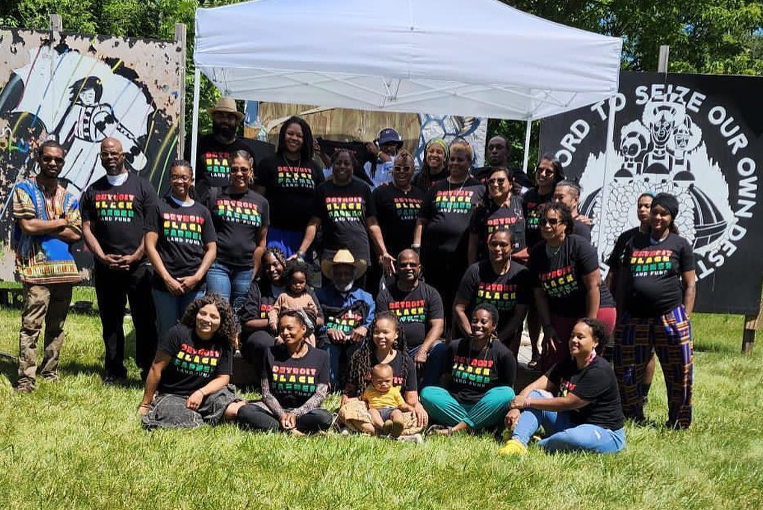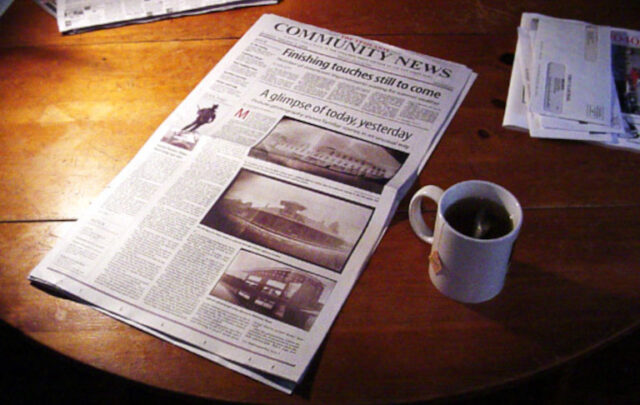One day, my mother dialed zero for the operator. As a Black woman living in Reagan’s 1980s era, isolated and economically struggling while surviving physical and sexual violence, she knew could not count on her predominantly white neighbors to stop her from committing suicide. My mother was past the stage of suicidal ideation and well into a solid plan to kill herself after my father had beaten her for confronting him when he sold off her land in Florida.
It wasn’t until years later that I understood the manifold losses my mother sustained as a result of my father selling her 2.5 acres of land north of Miami. It was as an adult that I understood the grief she must have felt at losing financial security and the communal legacy she had hoped to bequeath to her children, whom she hoped would eventually co-steward this land. Her grief, amplified by post-traumatic stress with major depressive features, culminated in the lack of a will to live.
Thankfully, when she dialed zero that day, the operator who answered was also a Black woman. She offered my mother, who was in a deep personal and economic crisis, exactly the sort of profound connection she needed. Their connection resonated with the communal environment of mutual aid and mutual rescue that has sustained Black women for centuries.
Years later, I also understood that in having the land taken from her, my mother lost a healing space. She lost her fruit trees and the vegetable and herb gardens that grew on the land, all of which were critical to sustaining her mental and physical health. The National Institutes of Health (NIH) points to extensive empirical literature linking nature and health. An April 30, 2021, article by Marcia P. Jimenez, Nicole V. DeVille, Elise G. Elliott, Jessica E. Schiff, Grete E. Wilt, Jaime E. Hart, and Peter James in the NIH National Library of Medicine, titled “Associations Between Nature Exposure and Health: A Review of the Evidence,” connects engagement with nature to “improved cognitive function, improved brain activity, mood and sleep, and the potentially long-term positive effects on depression, anxiety, and other chronic health issues.”
The article also discusses protective factors essential to BIPOC community well-being and presents data supporting the assertion that land reparations, and the access it provides to wetlands and grasslands, “promotes a sense of escape from people’s everyday environments, facilitating relaxation and reductions in cortisol and stress levels.” It discusses how exposure to wetlands in particular improves “early childhood development, shows preschoolers improvement in socio-emotional competencies, and a decrease in autism prevalence.”
Engagement in what are often communal and collective activities, including horticulture, traditional medicine walks, forest bathing, gardening, and the keeping of herbariums, is a critical social determinant of health (SDOH). As defined by the U.S. Department of Health and Human Services, SDOH “are the conditions in the environments where people are born, live, learn, work, play, worship, and age that affect a wide range of health, functioning, and quality-of-life outcomes and risks.”
As Jessica Gordon Nembhard, author of Collective Courage: A History of African American Cooperative Economic Thought and Practice, describes, communal environments also provide the scaffolding required to heal and repair grief. They provide a sense of belonging, mutual aid, and support as well as the affirmation of a mutual struggle. Most of all, such spaces can spur mobilizations for justice, equity, inclusion, and belonging—and could even save lives like that of my mother’s.
The Toxicity of “Rugged Individualism”
Utilizing land as a mutual aid intervention, we can deploy healthy, communal, and reparative frameworks to bring about positive human functioning, and provide support to build thriving individuals, families, and communities. This means rejecting the century-old myth of rugged individualism and isolationist notions of divide and conquer.
We saw the deadly impact of toxic individualism during the COVID-19 pandemic. In an Oct. 30, 2020, column in the Los Angeles Times, titled “Column: U.S. individualism isn’t rugged, it’s toxic — and it’s killing us,” Carolina A. Miranda described how “the focus on individual rights over the greater good is one for which we are paying with our health and our lives.” She pointed out the ways in which our sense of the collective failed when individuals refused to wear masks in public spaces to protect others. There were numerous reports during the pandemic of people becoming violent in grocery stores and on airplanes, all in the name of protecting so-called “individual freedom.” This notion of individualism is counter to the culturally specific communal practices characteristic of many BIPOC communities.
But American individualism has not worked for BIPOC individuals and families, who have historically leaned on each other for support and survival. While this nation’s commitment to individualism has been credited with fueling some of its greatest historical accomplishments, creating rapid economic growth, driving innovation, and spawning entrepreneurs, it has not yielded economic security or generational health for BIPOC communities.
Furthermore, living under an ideology of rugged individualism can dramatically compound the lasting effects of trauma. A March 11, 2019, report by Agorastos Agorastos, Panagiota Pervanidou, George P. Chrousos, and Dewleen G. Baker, titled “Developmental Trajectories of Early Life Stress and Trauma: A Narrative Review on Neurobiological Aspects Beyond Stress System Dysregulation,” points out that trauma and isolation can result in “diminished cognitive functioning and maladaptive emotional behavior.” It also concludes that trauma and isolation can lead to “failing health and permanent changes in neurobiological functioning.”
As evidenced by my mother’s story, a variety of intersecting factors are persistently at play and function as critical risk factors for BIPOC individuals experiencing grief, isolation, and suicidality. Developing and understanding ways of expanding the emotional connection between individuals, their communities, and the natural environment can promote health for BIPOC communities. Moreover, as Lisa Corbett and Martin Milton show in a 2011 article in the European Journal of Ecopsychology, titled “Ecopsychology: A perspective on trauma,” strengthening emotional health and remedying alienation from land-based cultural and ancestral practices, including mutuality with nature, can go a long way toward decolonizing Black women’s health and making land reparations.
Collective Land Stewardship as a Healthy Solution
Black land collectives, whether through deeded lands or land trusts, are a remedy for the collective grief from which Black people have struggled to recover. A Harper’s Magazine article by Audrea Lim, titled “We Shall Not Be Moved,” honors Black land collectives, like New Communities Inc. Located on over 1,600 acres in Albany, Georgia, it is widely recognized as the original model for community land trusts in the U.S. Founding members include Charles and Shirley Sherrod, former Georgia state director of rural development for the U.S. Department of Agriculture. The Detroit Black Farmer Land Fund has provided the means for Black families to acquire 12.9 acres of land. Another such collective is Black Women’s Blueprint, which I co-founded and lead as executive director. It is a Broolyn-based nonprofit dedicated to helping Black women and girls thrive after trauma through counseling, education, and health care access.
In the summer of 2020, with the world in a health crisis, we purchased nearly 300 acres of land in Ava, New York, and launched a land-based healing entity called Restore Forward, which is a reconciliation center inviting individuals from all walks of life to recover from states of grief, restore health, and restore relationships critical to their lives and their well-being. Our mission is to steward the journeys where people can be seen, heard, and held by each other and by nature. The land provides healing spaces and offers educational workshops, events, exhibitions, and retreats, advancing equity, belonging, and inclusive change.
However, we quickly faced racist backlash, a common occurrence facing BIPOC collectives that acquire land. WKTV News Channel 2 video documented the overwhelming crowd that forced a Black Women’s Blueprint town hall meeting onto the streets, and the jeers we faced, in a news report titled “Proposed Healing Center in Ava Met With Backlash.”
The Highlander Research and Education Center in New Market, Tennessee, faced a similar backlash, documented in an article in The New York Times entitled “‘White Power’ Symbol Was Found at Site of Fire, Civil Rights Center Says.”
Although the Fair Housing Act prohibits housing discrimination in the U.S., there is little to no evidence of meaningful racial diversity, equity, and inclusion (DEI), or justice-based initiatives targeting municipalities, local planning, zoning, and permitting agencies, in most of the towns where BIPOC collectives seek and acquire land. A Human Rights Campaign resource guide points out that “discrimination on the basis of sexual orientation and gender identity is prohibited by the city, county, or state in areas of employment, housing, and public accommodations.” Additionally, the New York State Division of Human Rights offers a “Guide To Racial Discrimination.” While it offers some protection to those who file complaints, it doesn’t go nearly far enough to create a culture of DEI. There are no programs undoing racism or encouraging values anchored in BIPOC peoples’ right to enjoy a sense of belonging in any neighborhood or community where they choose to live, work, or conduct business.
Through Black Women’s Blueprint, we aim to radicalize our sense of healing not as an individual process, but as a collective one, where working with each other, the land, and nature creates paths to peace and reparative justice. Our initiative, Restore Forward, weaves ancestral and traditional methods of healing: for the Earth itself as we restore the land, for each other as we restore broken relationships, and for ourselves as we rebalance connection, at a time when our world feels more fractured than ever.
Over the next few years, we hope that at least 800 individuals a year will engage with the land and our online programs, as Restore Forward marshals new paradigms for decolonizing health by increasing land and farm accessibility. We seek collaborators yearning to engage, fashion, and embody new, innovative communities responsive to the profound effects of injustice, violence, and exploitation on women and all people. From Land Back projects with Indigenous communities to giving Black farmers access to land, from building cooperatives in a solidarity economy to sustaining ecological systems, we are shifting our relationship with each other and with the Earth and the natural environment, utilizing land as part of our intervention to heal the type of intergenerational trauma my mother once faced.
Teaser photo credit: Black Farmer Land Fund Facebook page.





